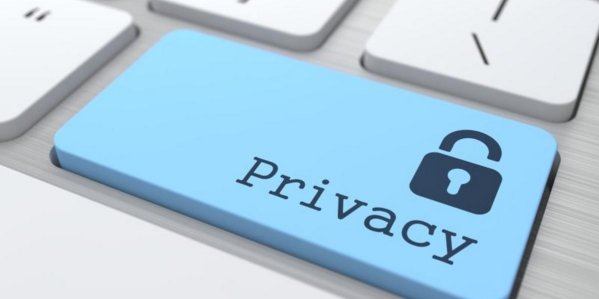When being advised about preserving one’s privacy online, some people shrug it off by stating that they have nothing to hide, and therefore, nothing to worry about in regards to their digital personal data. While this is a nice thought to think, this notion is also rather naive and short-sighted.
The social value of your personal data is your digital identity – your browsing history, your emails and social media connections. The economic value of your privacy is your purchase preferences, credit history, and any relevant data that can be sold for commercial advertising. The political value of your privacy translates into how you exercise your right to freedom of expression and right to information online, what you share and what you read on social media in response to the global events and political developments, your political affiliations and your voting behaviour. Recent Cambridge Analytica scandal is an example of how the political value of personal data can be used for manipulation of public opinion and election interference, even when data subjects “have nothing to hide”.
Remaining passive about your online privacy is no longer an option. Even if you think that your privacy carries no sensitive political value, it is likely that the economic and social value of your privacy remain vulnerable to harvesting. This is why every conscious internet user needs to deploy personal layered security to protect their privacy online.
Free online privacy tools
1. Free VPN clients offer the same services as paid VPN providers: they tunnel your traffic past your ISP, protect you from man-in-the-middle attacks on shady public WiFi, and encrypt your online traffic. Best free VPN services normally offer a basic package of VPN features, such as encryption, adblocking, kill switch, and sometimes even P2P support. The limitations of free VPN providers can seem restrictive if you want to use VPN to bypass geo-blocking on streaming services (like Netflix) if you need ninja connection speeds, if you want to choose the server location (most free VPNs assign it randomly), or if you need a 24/7 tech support. Free VPN services also often have a monthly data cap. On the other hand, if you install a VPN just to use it occasionally (for example, for securing your network on public WiFi), the limitations may not be such a dealbreaker.
2. Use a password manager and complex passwords for all your online accounts. If your password for all (or most) of your online accounts is “password”, or “123456”, or “qwerty”, we’ve got good news: if a few years ago the popularity of the “password” password was a running joke, now it is not even funny anymore. Understandably, you cannot memorise 50+ login+password combinations for you ample online presence. The good news is, you can memorise just one. Tools like LastPass or KeePass allow you to keep all your login credentials in one place, and access them by logging into the password manager with one set of credentials – the only one you have to keep in your mind. And for the love of reason, do not write these on a sticky note and hang it above your computer.
3. Always conduct an antivirus scan. Much like doing health checks with your GP, scan your device for malware on a regular basis. Antivirus software for personal use can be acquired free of charge and conduct a thorough check for threats on your phone, tablet, computer and portable external storage devices. Viruses is a constantly evolving threat, and this is why it is necessary to install updates for your antivirus software on a regular basis. Although internet cafés are going out of business (at least in Western countries), we sometimes use public computers at the library, airport, in print shops. Much like with public WiFi networks, public computers are a threat, especially if you use a USB drive to copy data from them. Most antivirus programs would scan a USB drive automatically when it is connected to your computer, but it is always advisable to be vigilant after you’ve used your USB on an unprotected public computer.
4. Software updates. Most software updates are not deployed to make the interface look prettier, but to patch up vulnerabilities that may harm your device. Do not ignore the updates or let them pile up. If you do not want updates to interfere with your workflow, leave them running overnight. While updating your most frequently used programs is important, updating your OS is an absolute must.
5. Take control over ads and trackers. Ads are not just annoying. They are extremely creepy when you realise they display product offers according to your recent searches, browsing history or even private online conversations. There are different positions regarding ads: providers like AdBlock, for example, recognise so-called ‘acceptable ads’ that adhere to the standards of unobtrusiveness, appropriate placement, size and distinctiveness. Other adblocking providers make a point of blocking all ads indiscriminately and preventing websites and apps from tracking your online activities.
6. Use privacy-friendly browsers. In your browsing experience, tracking and unencrypted data transfers are just half of your privacy concerns. An average browser collects and transmits information about you, –your “browser fingerprint”. This may include seemingly insignificant metadata like installed add-ons, fonts, configurations. Electronic Frontier Foundation developed a tool called Panopticlick that allows you to estimate how distinctive your browser fingerprint is. More privacy conscious browsers (like Mozilla or Brave) aim to not only protect you from tracking but to reduce your unique browsing identifiers. Tor browser, on the other hand, also comes with pre-installed encryption and privacy add-ons, and allows you to access websites that are blocked or geo-restricted.
In the digital age, the default privacy setting of our digital life shifted from forgetting to remembering and preserving information indefinitely. For those who cannot invest money in online privacy, there are many free ways to invest in knowledge-based practices that will protect your digital personal data.





